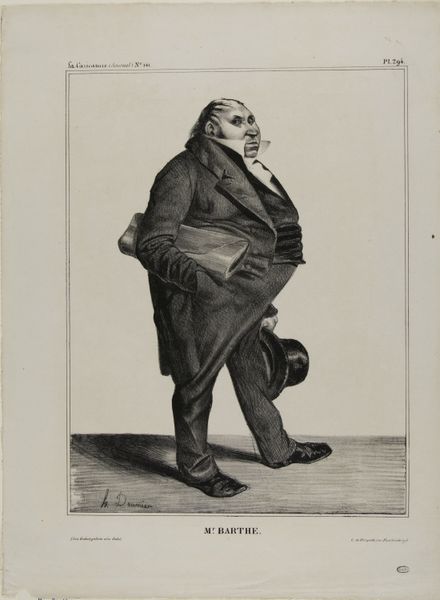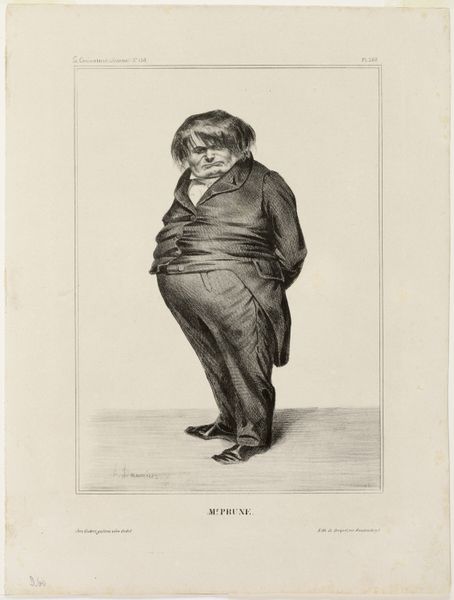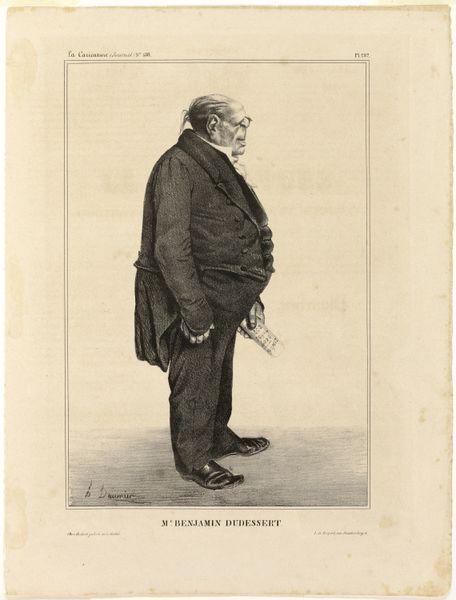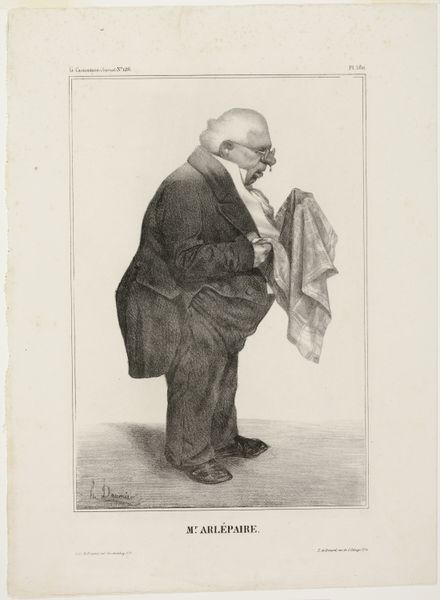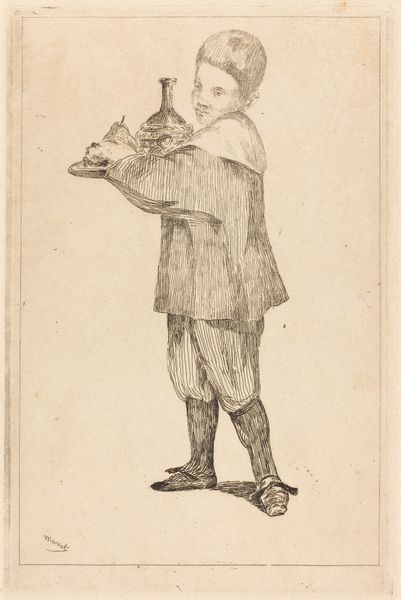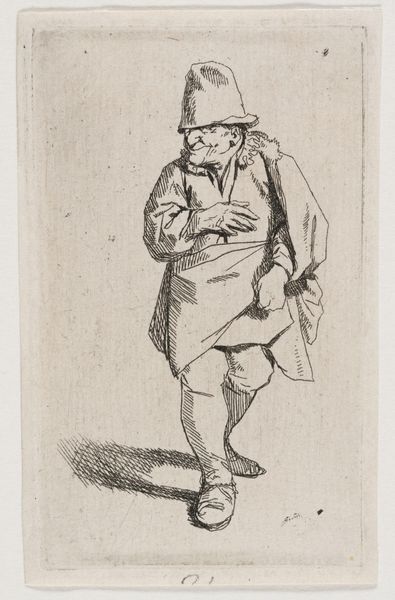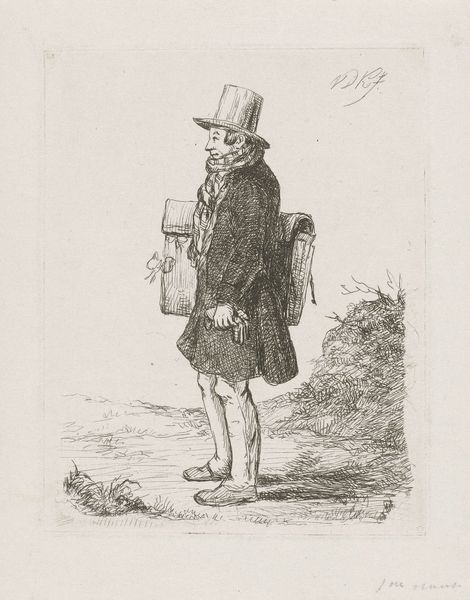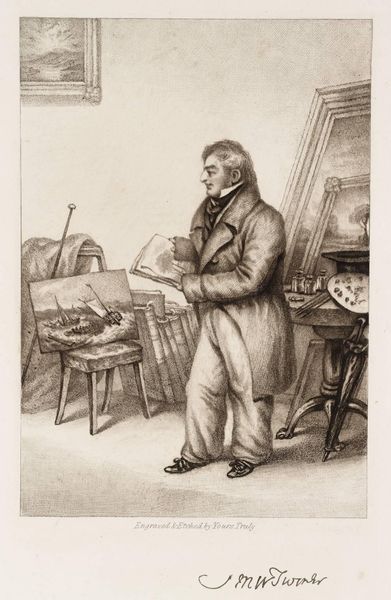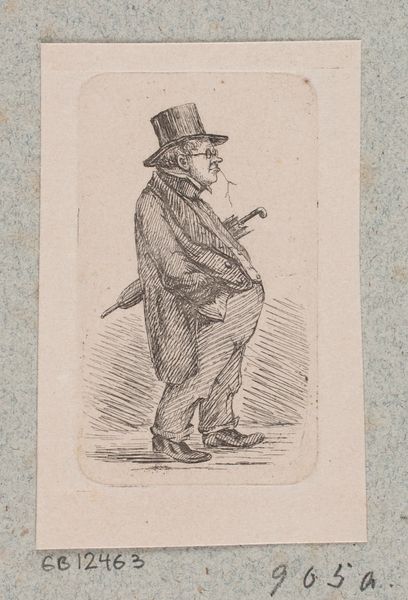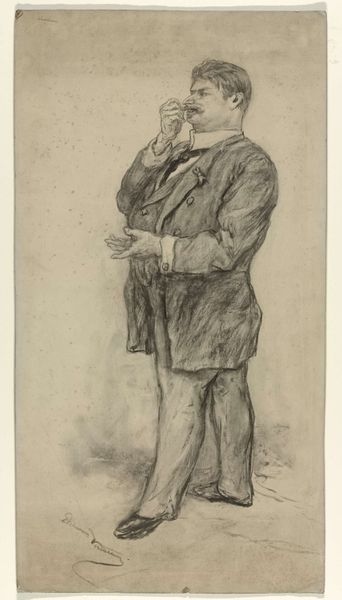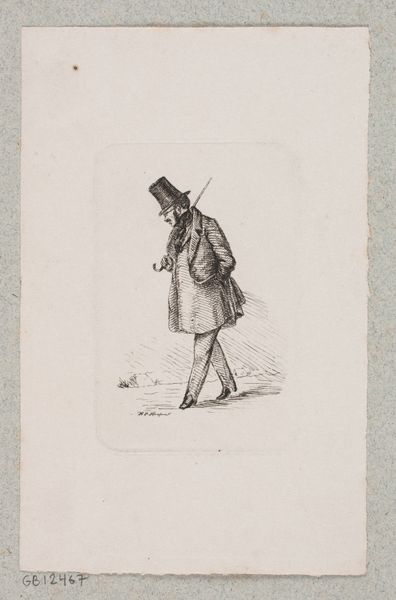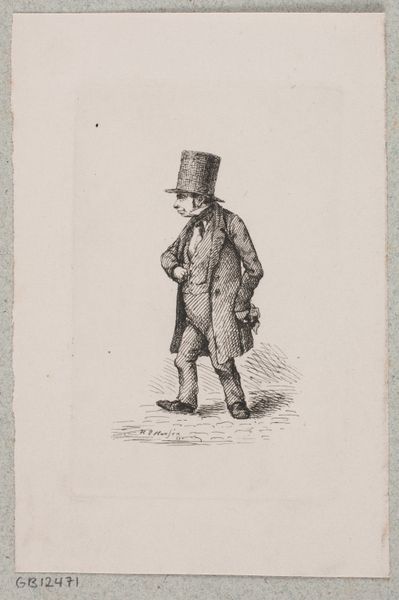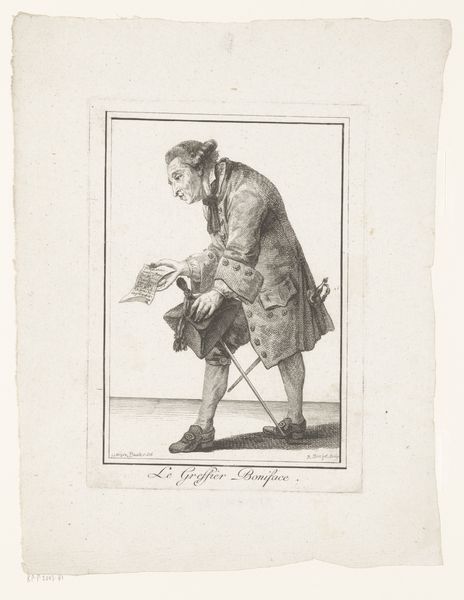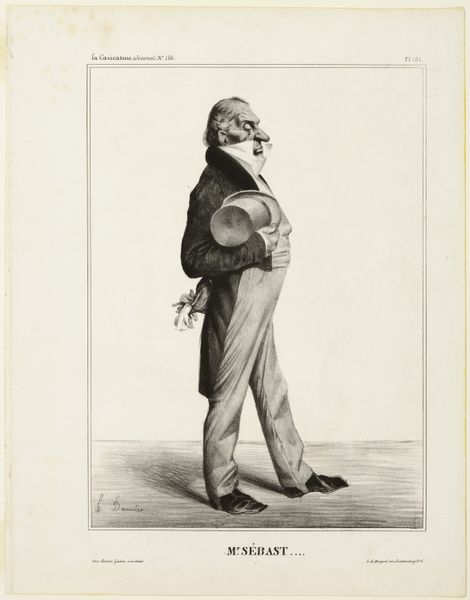
drawing, pencil
#
portrait
#
drawing
#
imaginative character sketch
#
light pencil work
#
pencil sketch
#
figuration
#
personal sketchbook
#
idea generation sketch
#
character sketch
#
pencil
#
sketchbook drawing
#
portrait drawing
#
pencil work
#
sketchbook art
#
realism
Dimensions: height 329 mm, width 243 mm
Copyright: Rijks Museum: Open Domain
Editor: Here we have "Man met dienblad", or "Man with Tray" from sometime between 1836 and 1863, a pencil drawing by Elchanon Verveer. I'm really struck by the contrasts in textures created just with pencil - the smooth glass, the starched linen... What's your perspective on this work? Curator: I find this piece fascinating when considering the context of its creation. The very act of using pencil, a relatively inexpensive and readily available material, to depict a scene of labor and potential servitude speaks volumes. This wasn’t a commission for a wealthy patron, but perhaps a personal exploration of social dynamics through accessible means. Editor: So you see the *materiality* of the piece itself reflecting those social dynamics? Curator: Precisely! Pencil, unlike oil paints or precious metals, was democratizing art production. Verveer chooses this material, in these years, to depict a man performing labor. It’s an intriguing choice that raises questions about the artist’s own social consciousness, and challenges the typical separation of 'high art' from everyday life. What about the flatness, compared to paintings of that period? Editor: That's a great point! Maybe Verveer wanted to strip away some of the pretension, making it about the human being rather than an idealized representation. What’s he holding in his other hand, though? A cloth of some kind? Curator: Perhaps. What labour does that suggest? A serving cloth implies one kind of transaction between individuals of different socio-economic strata. The tray… What if the glass upon it represents something much more – class, privilege, commodity? Editor: So, reading this, it's like a snapshot of social structures? The materials themselves and how they're deployed are clues about those structures? Curator: Exactly. And it urges us to look closely at the often-unseen labor that supports those structures, making it all visible on paper. I wonder about this drawing's role within the artist’s larger body of work, how these explorations of class and labor through drawing intersect and potentially challenge conventional artistic norms. Editor: Wow, that completely shifts how I see this drawing. I was initially just appreciating the technical skill, but now I see so much more complexity. Thanks!
Comments
No comments
Be the first to comment and join the conversation on the ultimate creative platform.
